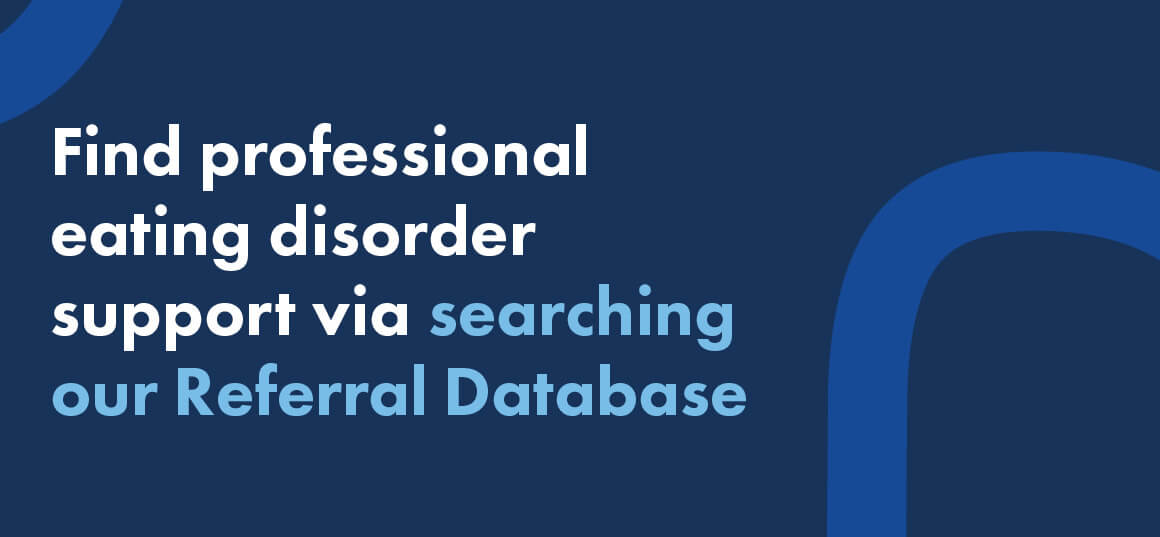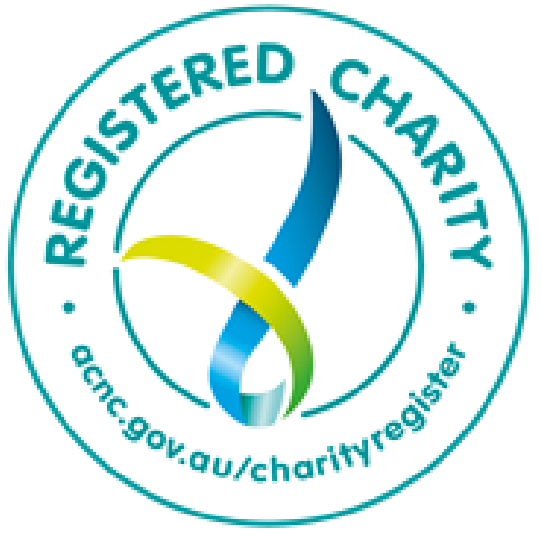Myths about eating disorders
Eating Disorders are misunderstood and grossly under-estimated. A lack of understanding and stigma associated with mental health affect community responses to eating disorders.
It is important that everyone understands the facts about mental health and eating disorders. This leads not only to a more aware and accepting community, but also improves prevention, early identification and help-seeking.
Eight Common Myths about Eating Disorders
The association between body dissatisfaction and eating disorders can sometimes lead people to mistakenly believe that eating disorders are prompted by vanity and represent a lifestyle choice to attain body ideals.
Truth:
Eating disorders are serious and potentially life threatening mental illnesses; they are not a lifestyle choice or a diet gone ‘too far’. A person with an eating disorder experiences severe disturbances in their behaviour around eating, exercising and related self harm because of distortions in their thoughts and emotions. Eating disorders defy classification solely as mental illnesses as they not only involve considerable psychological impairment and distress, but they are also associated with major wide-ranging and serious medical complications, which can affect every major organ in the body. The mortality rate for people with eating disorders is the highest of all psychiatric illnesses, and over 12 times higher than that for people without eating disorders.
The development of an eating disorder is an individual pathway, where genetic and personality vulnerabilities interact with social and environmental triggers.
One of these social and environmental triggers can be body image and body dissatisfaction. Body dissatisfaction can develop when a person has negative thoughts and feelings about his or her own body. Environmental influences play a large role in how people perceive and feel about their body. A person’s family, friends, acquaintances, teachers and the media all have an impact on how that person views themself and their appearance. If a person desires to meet society ideals and feels that they don’t measure up in comparison to media images or personal comparisons, body dissatisfaction can intensify and have a damaging impact on that person’s psychological and physical wellbeing. This is particularly important when an individual is in an appearance oriented environment or receives negative feedback about their appearance. Being teased, for example, increases a person’s risk of body dissatisfaction.
Eating disorders result from multiple factors and are not caused by any one factor. While body image concerns play a role in the development of an eating disorder for many people, for some people the development of an eating disorder is not related to a desire to meet social ideals.
For some people, the process of recovering from an eating disorder can be long and challenging for everyone involved. People with eating disorders require treatment for the underlying psychological issues and the impact on physical health. Treatment early in the development of the disorder can reduce the duration and severity of the illness.
Importantly, despite their seriousness, with the right treatment and support there is hope for recovery and improved quality of life at all stages of illness.
Research shows that most people, particularly adolescents, are confused about eating disorders. People recognise that eating disorders are potentially harmful; however they also accept body obsession and dieting as normal parts of growing up.
Studies in Australia and New Zealand have found:
- Approximately half of adolescent girls have tried to lose weight and practise disordered eating behaviours such as fasting, self-induced vomiting
- As many as 75% of high school girls feel fat or want to lose weight
Truth:
While moderate, sustainable changes in diet and exercise have been shown to be safe, significant mental and physical consequences may occur with extreme or unhealthy dieting practices. Eating disorders almost invariably occur in people who have engaged in dieting or disordered eating. Dieting is also associated with other health concerns including depression, anxiety, nutritional and metabolic problems, and, contrary to expectation, with an increase in weight.
While dieting practices are unhealthy at any life-stage, particular attention has been paid to dieting in adolescence. Puberty is a time of great change biologically, physically and psychologically. Teenagers are often vulnerable to societal pressures and can often feel insecure and self-conscious, which are factors that increase the risk of engaging in extreme dieting behaviour. Research shows that young people who engage in unhealthy dieting practices are almost three times as likely as their healthy-dieting peers to score high on measures assessing suicide risk.
Studies in Australia and New Zealand have found:
- Young people who diet moderately are six times more likely to develop an eating disorder; and those who are severe dieters have an 18-fold risk
- Among girls who diet, the risk of obesity is greater than for non-dieters.
Research shows that over 50% of 12-17 year olds strongly agreed or agreed that a person with an eating disorder should ‘snap out of it, there are more important things in life to worry about’.
These types of misconceptions are not limited to the general public. A person with an eating disorder may receive similar reactions from some health professionals.
Truth:
People with eating disorders are not seeking attention. In fact, due to the nature of an eating disorder a person may go to great lengths to hide, disguise or deny their behaviour, or may not recognise that there is anything wrong.
An eating disorder is a serious mental illness. It is not a phase and it will not be resolved without treatment and support. Regardless of the age of a person at the time their eating disorder begins, there is often a considerable period of time between onset and treatment; an average of approximately 4 years between the start of disordered eating behaviours and first treatment. The person may also see a number of healthcare professionals before receiving a correct diagnosis. A reduction of this delay can result in improved health and quality of life. Evidence shows that early diagnosis and intervention can greatly reduce the duration and severity of an eating disorder. It is therefore vital to seek professional help at the earliest possible time.
There is a common, historic misconception that family members can cause eating disorders through their interactions with a person at risk
This misconception has been so pervasive that historically parents were treated by medical practitioners as one of the factors contributing to an eating disorder rather than one of the resources available to help a person with an eating disorder recover.
Truth:
There is in fact no evidence that eating disorders can be caused by particular parenting styles.
There is strong evidence that eating disorders have a genetic basis and people who have family members with an eating disorder may be at higher risk of developing an eating disorder themselves. However, although a person’s genetics may predispose them to developing an eating disorder this is certainly not the fault of their family. Genetics play a role in many illnesses; both mental (e.g. schizophrenia) and physical (e.g. breast cancer and heart disease).
Family and friends play a crucial role in the care, support and recovery of people with eating disorders. Clinical guidelines for best practice in managing eating disorders encourage the inclusion of families at each stage of treatment for adolescents with eating disorders, from the initial assessment to providing recovery support.
For adolescents, Family Based Treatment is currently the treatment with the strongest evidence base. Both Family Based Treatment and Supportive Family Therapy have been found to be effective in the treatment of Anorexia Nervosa.
The effects of an eating disorder are often felt not only by the person experiencing it, but also by their family and support network. Carers, including parents, partners, friends, grandparents, children, siblings, grandchildren, neighbours or any other person caring for someone with an eating disorder, often feel:
- Distressed about what is happening to themselves, the person they care for, and their family
- Burnt out from the demands of caring for someone with an eating disorder on top of family life and work commitments
- Confused about the best way to help, both daily and in the long term goal of recovery
- Anxious about the physical and psychological changes in the person they care for
- Fearful of daily routine such as meal times
- Frustrated by being unable to fix or resolve the eating disorder
- Unable to continue doing things they used to enjoy
- Hopeless about their ability to provide support
All of these feelings are valid and normal. Caring for someone with an eating disorder is a huge responsibility and comes with considerable personal strain.
It is true that the peak period for the onset of eating disorders is between the ages of 12 and 25 years, with a median age of around 18 years.
One key group with a high risk of eating disorders is women, particularly those going through key transition periods (e.g. from school to adult life, pregnancy and menopause). This high risk has lead to a misconception that eating disorders only happen in this population.
Truth:
Eating disorders can affect anyone. They occur:
- Across all cultural and socio-economic backgrounds
- Amongst people of all ages, from children to the elderly
- In both men and women
Population studies have suggested that males make up approximately 25% of people with anorexia nervosa or bulimia nervosa and 40% of people with binge eating disorder. In a recent study lifetime prevalence for anorexia nervosa in adolescents aged 13 – 18 years found no difference between males and females.
In addition to women and adolescents, there are other groups in the community who are also at a higher risk of developing an eating disorder, for example:
- People who engage in particular sports (e.g. gymnastics, athletics, rowing), dancers and models
- People who are experiencing high levels of stress
- People who have other mental illnesses, such as anxiety or depression
- People who have other physical illnesses, such as diabetes and polycystic ovary syndrome.
Eating disorders are not limited to any one group of people and the prevalence of eating disorders in specific high risk groups should not distract the community from the importance of recognising eating disorders in other populations.
Truth:
Eating disorders come in all shapes and sizes. You can be considered a normal size or overweight and still have a diagnosis of an eating disorder.
Truth:
They are not! Eating disorders are complex mental illnesses that require comprehensive and effective treatment from specialists.
Truth:
Recovery is possible. Eating disorders are treatable at every age, stage and point in a persons life.



















